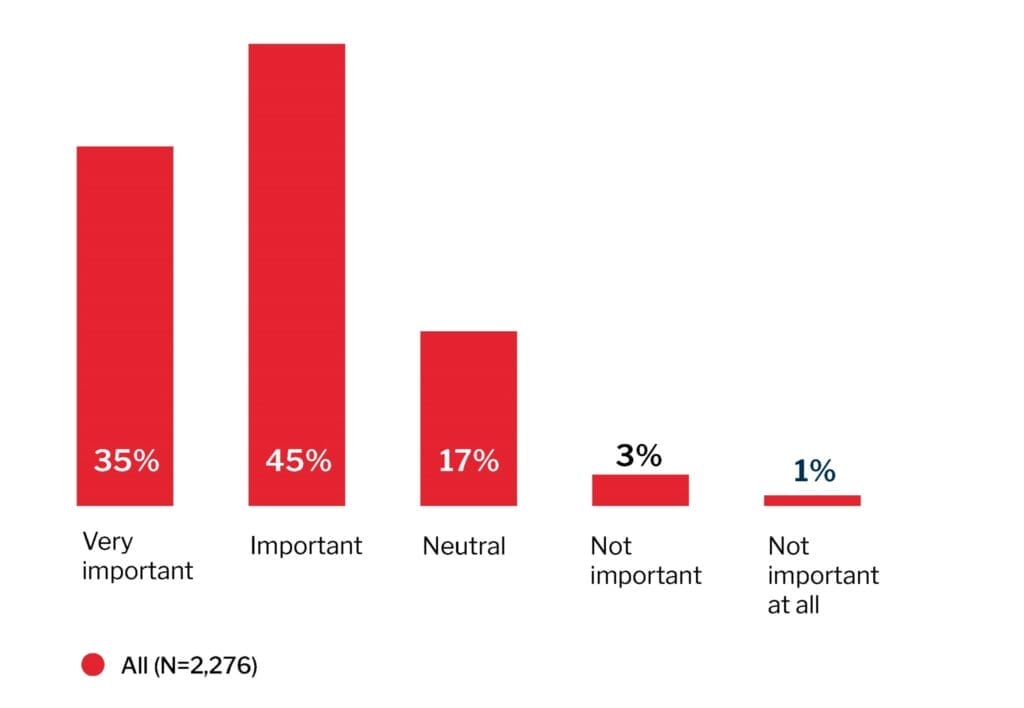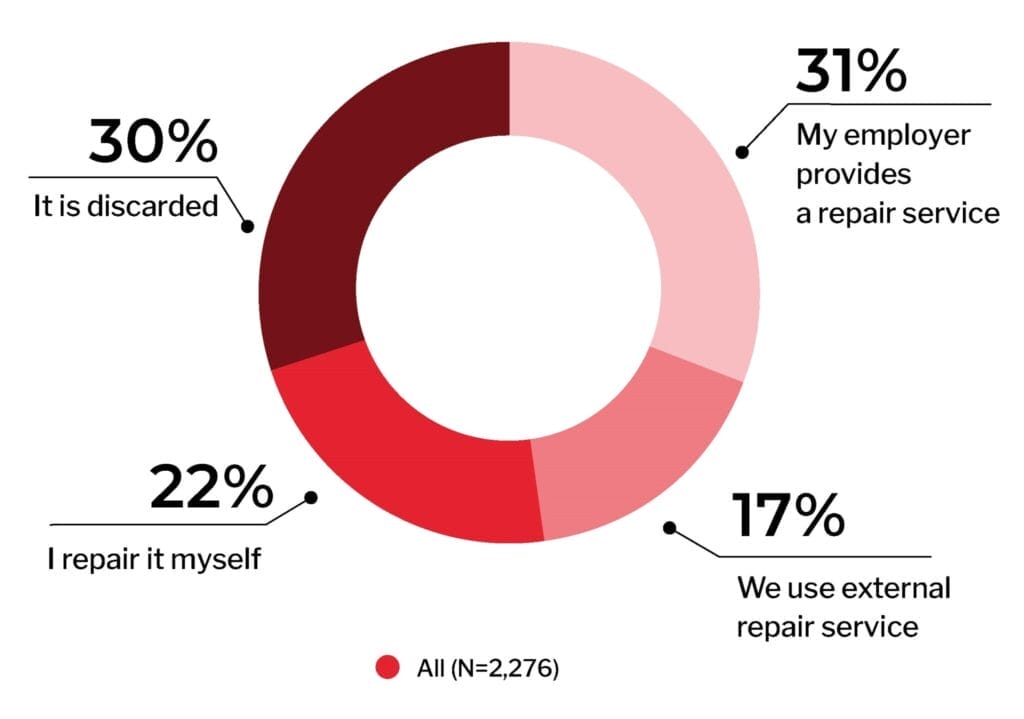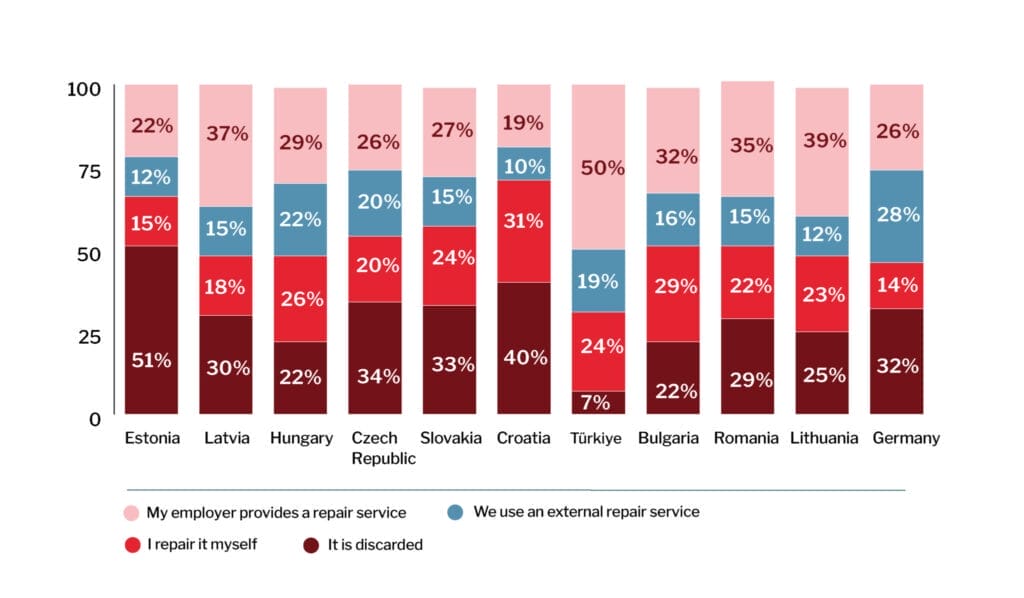
Study shows growing sustainability awareness—and room for better workwear practices
A recent European-wide study revealed that sustainability is increasingly important to employees in the manufacturing sector. However, current practices surrounding workwear management still fall behind these growing expectations. There is still room for improvement with the quality of workwear, repair, and recycling practices.
Sustainability matters—but workwear falls short, study finds
The study was conducted by the leading market research company Norstat for Lindström. It surveyed 2,276 workwear users across 11 European countries. The findings indicate that 80% of employees consider sustainability important or very important in their personal lives. Furthermore, 58% of respondents expressed a desire to learn more about the sustainability of their workwear.
Yet, the study shows that gaps in the sustainability of workwear practices persist. Less than half of employers offer workwear repair services. This means damaged workwear is discarded (30%), or employees repair it themselves (22%). Over 40% of employees are unaware of what happens to their discarded workwear. Among those who are informed, nearly one-third reported that discarded garments are sent to landfills.
“The key requirement for sustainable workwear is longevity. The longer a garment remains in use, the lower its environmental impact,” explains Ulla Luhtasela, Sustainability Director at Lindström. “Durability, reusability, and repairability must be considered right from the design stage if we are serious about advancing circularity and reducing textile waste.”
Low durability was also cited as the most common concern with current workwear, mentioned by 31% of respondents. Furthermore, 70% of employees stated that investing in higher-quality materials would be the most effective way to extend the lifespan of workwear.
How important is sustainability to employees?

What happens to damaged workwear?

Türkiye sets the benchmark for sustainable practices
Among the countries surveyed, Türkiye stood out for its advanced approach to sustainability. Repair services are significantly more common in Türkiye, with nearly 70% of employees reporting that their employer provides garment repairs—well above the European average of 48%. Furthermore, only 7% of Türkish respondents said that damaged workwear is discarded, compared to 30% across Europe.
Türkish employees were also better informed about the end-of-life management of their garments and they reported the highest textile recycling rate: 56% overall and 66% among those who knew where the garments ended up (compared to 29% and 51%, respectively, across Europe). In contrast, textile recycling was reported as least common in the Baltic countries.
“These results may also reflect the national infrastructure. Türkiye has a well-established textile industry, which may support related practices such as repairing and recycling. Many other European countries are still in the early stages of developing effective textile recycling solutions,” says Luhtasela.
What happens to damaged workwear?

Growing pressure for improvement
With expectations rising from both the European Union and employees, the pressure to improve sustainable workwear practices is increasing. According to Luhtasela, a lack of time, awareness, and practical solutions remain major barriers:
“It’s often quicker to discard a damaged garment than to organise repair or recycling through external partners. Finding, auditing, and working with reliable recycling partners takes time, expertise, and resources.”
More information about the study
Leena Kähkönen
Manager, External communication
+358 50 58 68 582
About the study
The study was conducted by Norstat, the leading independent European data collector for market research in February 2025. It covered 11 European countries: Bulgaria, Croatia, Czech Republic, Estonia, Germany, Hungary, Latvia, Lithuania, Romania, Slovakia, and Türkiey.
A total of 2,276 workwear users in manufacturing industry participated in the survey. The majority of respondents were permanent employees, (79% of participants), women and men equally presented (50%).





